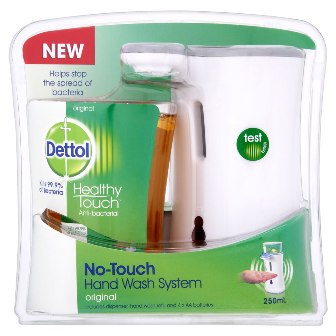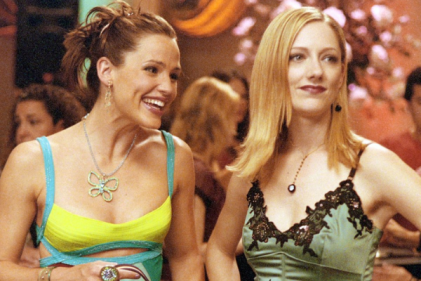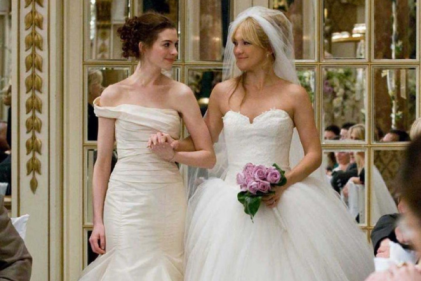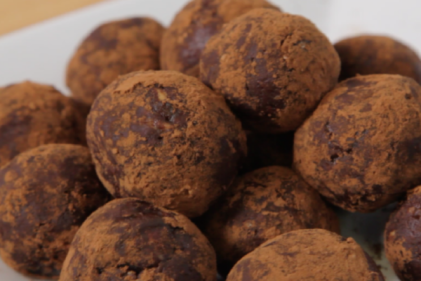As a new mother, you will want to do everything you can to care for your newborn, keeping baby healthy and happy. When you bring baby home, there are many new tasks that will become part of your new routine. Dettol’s Mission for Health aims to guide new mums through some simple hygiene routines that can be easily incorporated into your day to help protect baby from the harmful germs that can cause colds, flu, diarrhoea and other infections.
Handwashing:
 Your baby’s immune system is not fully developed so a strict handwashing routine is important for you and anyone else who touches your baby.
Your baby’s immune system is not fully developed so a strict handwashing routine is important for you and anyone else who touches your baby.- Make sure that anyone who touches your baby — family members, visitors and baby sitters — washes their hands frequently.
- Use a hand sanitiser to destroy the germs on your hands if soap and water are not available.
- Preparing a feed, before handling any sterilised equipment and after changing a baby’s nappy.
Cleaning and Disinfecting Surfaces in the Nursery
Babies are more susceptible to infections than adults are, so it is important that the surfaces they come into contact with are hygienically clean. However, cleaning is not good enough to remove germs from fixed surfaces such as worktops, taps or handles, or large surfaces, such as highchairs, cots and nappy changing mats, because you cannot rinse them properly. To destroy germs on large or fixed surfaces you need to clean away any visible dirt and then apply a suitable disinfectant product such as Dettol Anti-bacterial Surface Cleanser Trigger Spray or Dettol Anti-bacterial Surface Cleansing Wipes.
- As in other areas of your home, surfaces in the nursery that you or your baby often touch, such as handles and toys, need cleaning and disinfecting frequently.
- Make sure you remove any vomit, faeces or other body fluids promptly, then clean and disinfect any contaminated surfaces or items.
- After each nappy change, clean and disinfect the nappy changing surfaces and any surface that may have become contaminated with faecal germs (e.g. taps, handles).
- If the surface, toy or other item that you are disinfecting will come in direct contact with your baby, you may need to rinse it well with clean water after you have disinfected it. Always read the product label.
- Germs on damp surfaces can survive and multiply rapidly. You can help stop germs growing by keeping surfaces as dry as possible.
- Remember to wash your hands after cleaning.
Strategies for Visitors
There are two general rules you should ask visitors to follow in the early weeks.
- Wash your hands thoroughly before touching the baby.
- Do not visit if you are ill (e.g. with a cold or flu) or within 48 hours of having a tummy upset.
Taking Baby Visiting
When you take your baby out, you should follow the same basic hygiene practices that you do at home. This can help keep your baby from picking up harmful germs along the way.
- Wash or clean your hands before touching your baby. Ask others to wash or clean their hands before touching your baby too. Always have a hand sanitiser available.
- Avoid contact with people who are ill (e.g. with a cold or flu) and anyone who has had a tummy upset within the last 48 hours. Do not hesitate to say no if someone asks to hold your baby and you would prefer them not to.
- Clean and disinfect nappy changing surfaces and any other surface that you may have touched or contaminated after every nappy change.
Suggested Supplies for when you are out and about
- Nappies and wipes
- A bag to hold dirty nappies.
- Hand sanitiser so that you can destroy the germs on your hands when you don't have access to soap and water.
- A change of clothes for baby, just in case.
- A portable nappy changing mat
- Sterilised bottles (if needed)
- A cooler or thermos to keep bottles of formula or expressed breast milk cold.
- A disinfectant spray or wipes to clean surfaces where you change your baby
- Some appropriate toys for your baby.
Nappy Changing
Once your baby arrives, feeding and changing can seem to take up most of your time. In fact, babies may use as many as 12 nappies a day. The following guidelines can help you prepare and perform your baby's nappy changes efficiently and safely.
Step 1: Gather Supplies First
It is important to have everything ready and within your reach (but out of your child’s reach) before you change your child’s nappy. This includes:
- Clean nappy
- Nappy pins or fasteners (if you are using cloth nappies)
- Container of warm water and cotton wool
- Clean soft towel to pat baby dry
- Waterproof nappy changing mat or a clean dry towel to place under your baby.
- Dettol Surface Cleaning Wipes or Dettol Surface Cleanser Trigger to clean and disinfect the nappy changing mat and any other surface that may have become contaminated during nappy changing
Step 2: Safety During Nappy Changing
- The safest place to change a nappy is on a changing mat or towel on the floor. That way, if your baby wriggles or rolls they cannot fall and hurt themselves.
- If you use a raised surface to change a nappy, never leave your baby unattended. Keep one hand on your baby to prevent him or her from falling - even a newborn can roll.
- Give your baby something to look at while being changed - a baby who is preoccupied won't wriggle and squirm so much.
Step 3: Nappy Changing Steps
- Unfasten the soiled nappy and hold your baby's legs up by gently grasping both ankles with one hand. Remove the soiled nappy and set it aside, out of baby's reach.
- Wash your baby’s bottom thoroughly using cotton wool and warm water. Gently wipe from the front to the back. Wiping back to front can spread bacteria and cause a urinary tract infection.
- For boys, it is a good idea to place a clean nappy over the front during changing to stop them urinating on you or anything else within range.
- Once you have finished wiping, pat your baby dry with a clean soft towel.
- If your baby's umbilical cord stump has not fallen off yet, fold down the waistline of the nappy to help keep that area dry.
- Use Dettol Surface Cleaning Wipes or Dettol Surface Cleanser Trigger to clean and disinfect the nappy changing mat and any other surface that you have touched or contaminated during nappy changing (e.g. taps, handles)
- Make sure you leave the surfaces dry.
- Always wash your hands thoroughly after changing your baby's nappy to help prevent the spread of germs.
This article is brought to you in association with Dettol.












